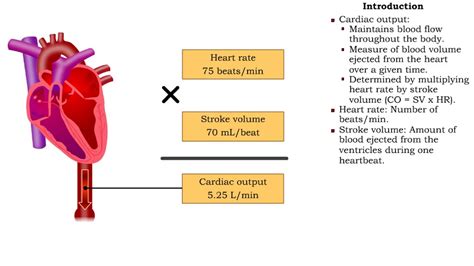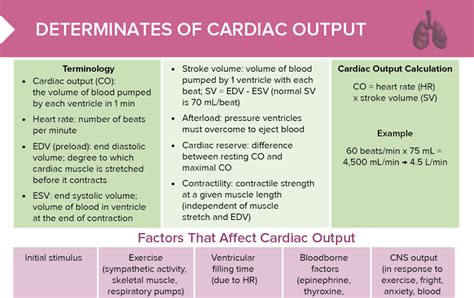lv cardiac output | normal cardiac output for adults lv cardiac output Health Library / Diagnostics & Testing / Cardiac Output. Cardiac output, or how much blood . Komēdija, Piedzīvojumu filma, Ģimenes filma. Dublēta krievu valodā. Dīva, izlutināta, sociālajos tīklos slavena kaķene, un asprātīgs ielu suns Čiči, pazaudē savus saimniekus. Mīluļi neieredz viens otru, taču tiem kopā jādodas trakā ceļojumā no Monreālas uz Ņujorku. 1 h 30 minRUS (subt.LAV) U.
0 · ways to increase cardiac output
1 · normal heart output chart
2 · normal cardiac output for adults
3 · how to increase cardiac output
4 · cardiac output monitoring normal values
5 · cardiac output index normal values
6 · cardiac output check your understanding
7 · cardiac output by age
Left ventricular ejection fraction (LVEF) Ejection fraction typically refers to the left side of the heart. It shows how much oxygen-rich blood is pumped out of the left ventricle to most of the body’s organs with each contraction. LVEF helps determine the severity of dysfunction on the left side of the heart.
Cardiac output is defined as the amount of blood your heart pumps. Learn about the normal output rate, how it's measured, and causes of low cardiac output. The primary function of the left ventricle is to provide sufficient cardiac output to maintain blood flow to other organ systems. Cardiac output .Ejection fraction (EF) is a parameter related to SV. EF is the fraction of blood ejected by the left ventricle (LV) during the contraction or ejection phase of the cardiac cycle or systole. Prior to the start of systole, during the filling phase (diastole), the LV is filled with blood to the capacity known as end diastolic volume (EDV). During systole, the LV contracts and ejects blood until it reaches its minimum capacity known as end systolic volume (ESV). It does not completely empty. The fo.Health Library / Diagnostics & Testing / Cardiac Output. Cardiac output, or how much blood .
How to obtain the left ventricular outflow tract (LVOT) diameter to determine the LVOT area. How to obtain the LVOT velocity time integral (VTI) How to use these values to calculate stroke volume and cardiac output. In addition, we made a .Assessment of cardiac output (CO) and stroke volume (SV) is important in guiding the .
Stroke volume (SV), cardiac output (CO) and cardiac index (CI) Stroke volume is the amount of . cardiac output: Q = SV X HR. = (Aortic Area x V x Tej) x HR. Q = cardiac output. .
ways to increase cardiac output

The LV pressure increases without a change in volume during isovolumetric contraction. When .Cardiac Output. Cardiac output is the volume of blood the left ventricle pumps out to the body . Cardiac output is defined as the amount of blood your heart pumps. Learn about the normal output rate, how it's measured, and causes of low cardiac output.
The primary function of the left ventricle is to provide sufficient cardiac output to maintain blood flow to other organ systems. Cardiac output results from systolic contraction of the left ventricle, which can be influenced by preload, afterload, and contractility.
Cardiac output is a global blood flow parameter of interest in hemodynamics, the study of the flow of blood. The factors affecting stroke volume and heart rate also affect cardiac output. The figure at the right margin illustrates this dependency and lists some of these factors.Health Library / Diagnostics & Testing / Cardiac Output. Cardiac output, or how much blood your heart can pump in a minute, can tell your healthcare provider about your heart’s strength and health. This can help them make a diagnosis or find out if your treatment is working as it should.How to obtain the left ventricular outflow tract (LVOT) diameter to determine the LVOT area. How to obtain the LVOT velocity time integral (VTI) How to use these values to calculate stroke volume and cardiac output. In addition, we made a free downloadable Cardiac Output PDF pocket card for you and even a Cardiac Output Calculator!Assessment of cardiac output (CO) and stroke volume (SV) is important in guiding the diagnosis, prognosis, and therapeutic management of a range of cardiopulmonary diseases. CO differentiates low- from high-output heart failure and helps identify low-flow aortic stenosis (AS).
Stroke volume (SV), cardiac output (CO) and cardiac index (CI) Stroke volume is the amount of blood ejected into the aorta during systole. Stroke volume is calculated by measuring the Doppler flow in the aortic valve. In the left ventricular outflow . cardiac output: Q = SV X HR. = (Aortic Area x V x Tej) x HR. Q = cardiac output. Aortic area = cross sectional area. V = velocity for each beat. Tej = time period during ejection. HR = heart rate.The LV pressure increases without a change in volume during isovolumetric contraction. When the LV pressure exceeds the aortic pressure, the aortic valve opens. During LV ejection, LV volume falls.
Cardiac Output. Cardiac output is the volume of blood the left ventricle pumps out to the body per minute. The main purpose of the heart is to maintain cardiac output at an appropriate level to perfuse all of our organs. The units for cardiac output are volume/time (mL/min). Cardiac output is defined as the amount of blood your heart pumps. Learn about the normal output rate, how it's measured, and causes of low cardiac output. The primary function of the left ventricle is to provide sufficient cardiac output to maintain blood flow to other organ systems. Cardiac output results from systolic contraction of the left ventricle, which can be influenced by preload, afterload, and contractility.
Cardiac output is a global blood flow parameter of interest in hemodynamics, the study of the flow of blood. The factors affecting stroke volume and heart rate also affect cardiac output. The figure at the right margin illustrates this dependency and lists some of these factors.
Health Library / Diagnostics & Testing / Cardiac Output. Cardiac output, or how much blood your heart can pump in a minute, can tell your healthcare provider about your heart’s strength and health. This can help them make a diagnosis or find out if your treatment is working as it should.
How to obtain the left ventricular outflow tract (LVOT) diameter to determine the LVOT area. How to obtain the LVOT velocity time integral (VTI) How to use these values to calculate stroke volume and cardiac output. In addition, we made a free downloadable Cardiac Output PDF pocket card for you and even a Cardiac Output Calculator!Assessment of cardiac output (CO) and stroke volume (SV) is important in guiding the diagnosis, prognosis, and therapeutic management of a range of cardiopulmonary diseases. CO differentiates low- from high-output heart failure and helps identify low-flow aortic stenosis (AS).Stroke volume (SV), cardiac output (CO) and cardiac index (CI) Stroke volume is the amount of blood ejected into the aorta during systole. Stroke volume is calculated by measuring the Doppler flow in the aortic valve. In the left ventricular outflow .
cardiac output: Q = SV X HR. = (Aortic Area x V x Tej) x HR. Q = cardiac output. Aortic area = cross sectional area. V = velocity for each beat. Tej = time period during ejection. HR = heart rate.The LV pressure increases without a change in volume during isovolumetric contraction. When the LV pressure exceeds the aortic pressure, the aortic valve opens. During LV ejection, LV volume falls.
normal heart output chart

ysl college bag large replica
normal cardiac output for adults
Gordon Ramsay Steak - Paris Las Vegas. 4.5. 23910 Reviews. $50 and over. Steakhouse. Top tags: Good for special occasions. Fancy. Great for fine wines. **For parties of 7-13, please call (702)946-4663 and for parties of 14 or more please call (866)733-5827 to reserve**
lv cardiac output|normal cardiac output for adults



























